Last Thursday my mother-in-law kindly took the kids off my hands for the weekend, and offered me her place at the official launch of the new museum display for the hogback stones in Govan. Not being one to sniff at things like that, I gladly accepted and off I went. I only got slightly lost trying to find my way there.
Govan is a very old part of Glasgow and is home to a fine collection of carved stones, mostly dating to between the ninth-eleventh centuries. The stones are housed in the old parish church (which still functions as a place of worship, in addition to being museum), and the display is comprised of a number of recumbent slabs, crosses, the Viking hogbacks, and a fine sarcophagus that is thought to have been made for St Constantine, son of Cinaed mac Alpin.
There's an old brochure you can look at here, which gives details of a lot of the stones, though it's in a different layout to the one I saw so I presume it's from the previous display. Now, just as you go in, you see the 'Sun Stone':
Which takes its name from the assumption that the boss at the top is a sun with serpent rays spiralling out from it. The other side has a guy on a horse and a cross:
The Sun Stone is situated to another impressive stone, also with 'dude on a horse':
The back of which has some really intricate knotwork going on:
Remember those Pictish carvings from last month? I think the similarities with those are very striking on this one. Many of the other carvings are in bad shape because they spent many centuries lying around outdoors, not being looked after. A lot of them were also recycled from around the seventeenth century onwards, and after being repositioned to mark someone's grave they were often engraved to commemorate their new host. This one's a good example of the weathering that many have suffered, and the engraving:
The hogbacks are collected together off to one side, and they get their name from the slightly curved shape their tops have. They're actually thought to represent Viking longhouses rather than pigs, and you can find them in parts of northern England as well – wherever the Vikings went, really. Behold!
This one is one of the largest. There were some very young Vikings happily posing amongst some of the smaller ones, too:
(Yarrrr!)
Finally, before I overload this post with way too many pictures, there's the sarcophagus:
See also: The Canmore record for the site.
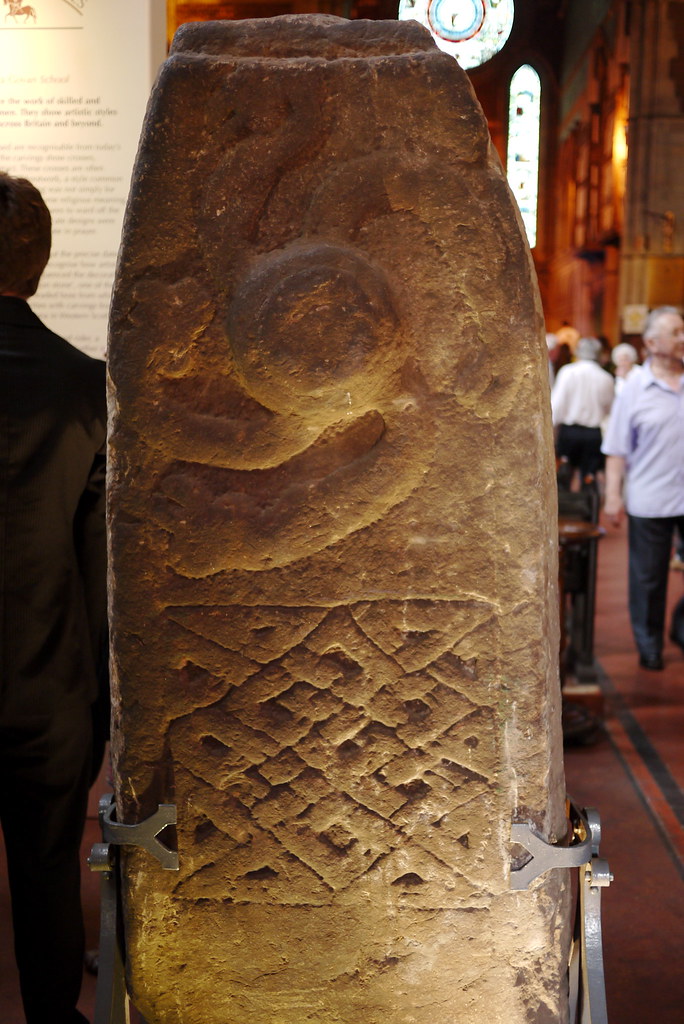
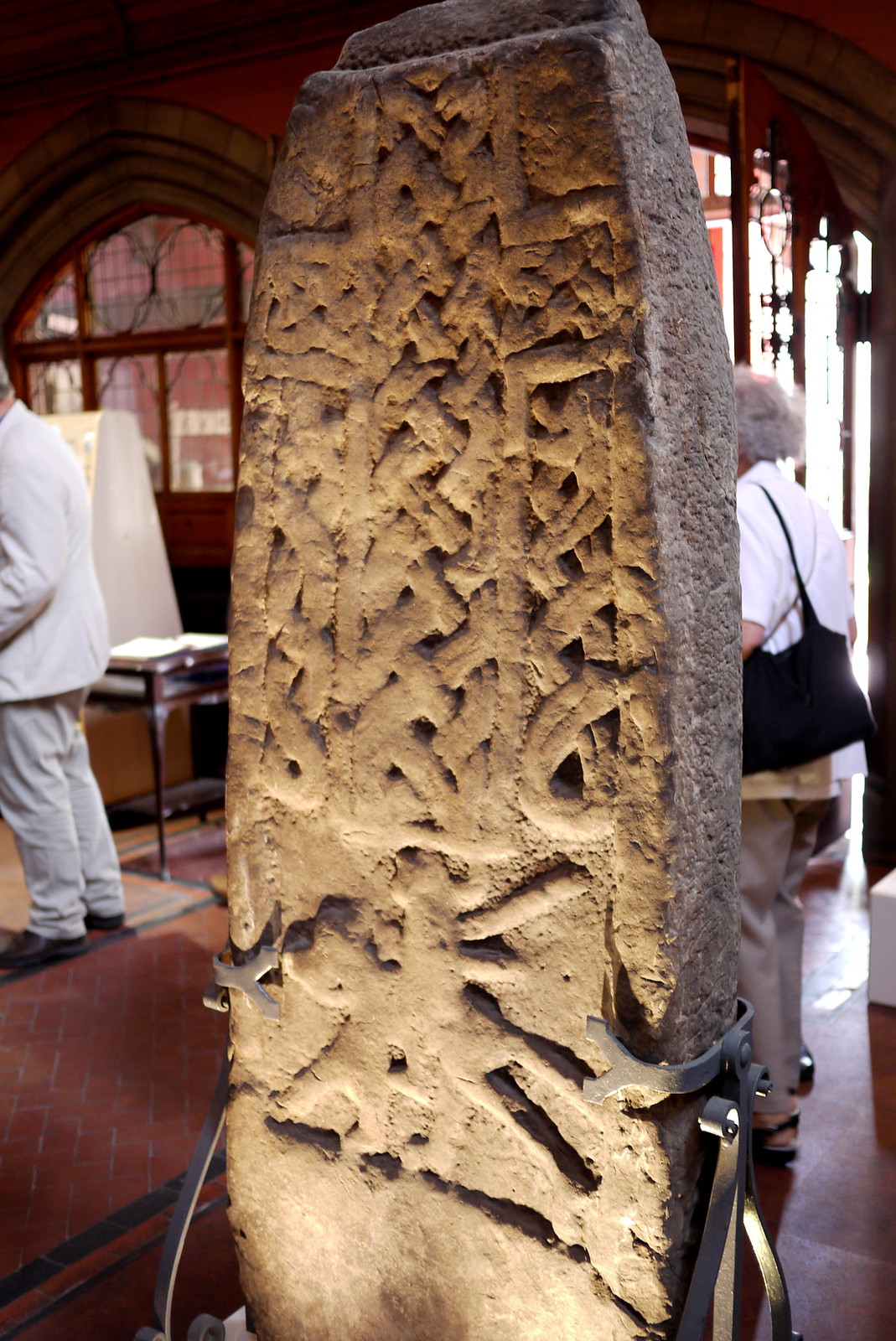
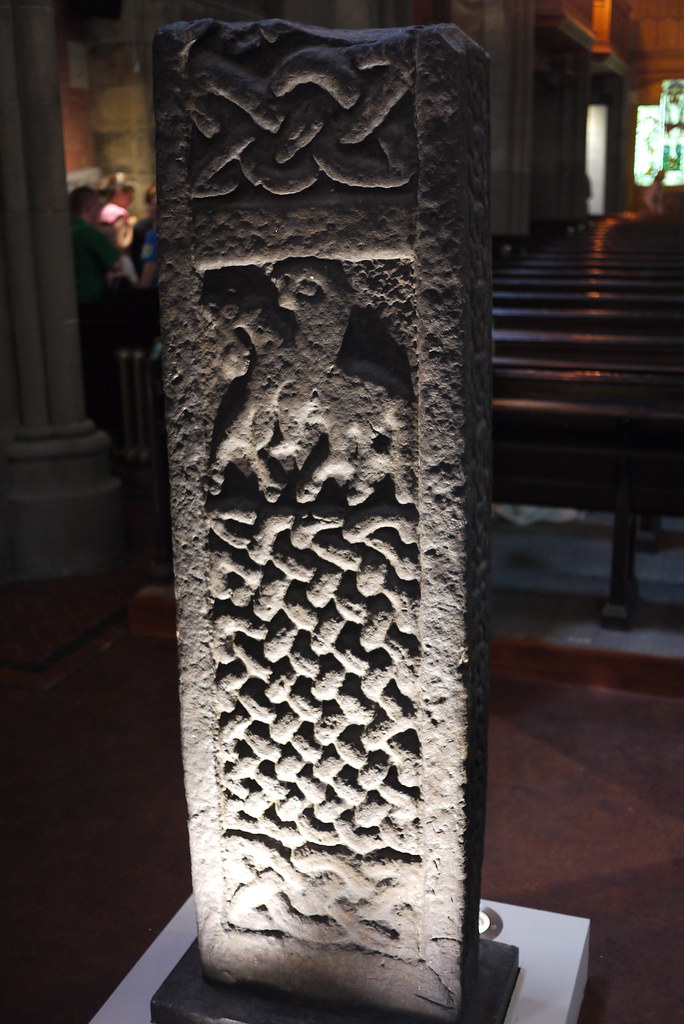

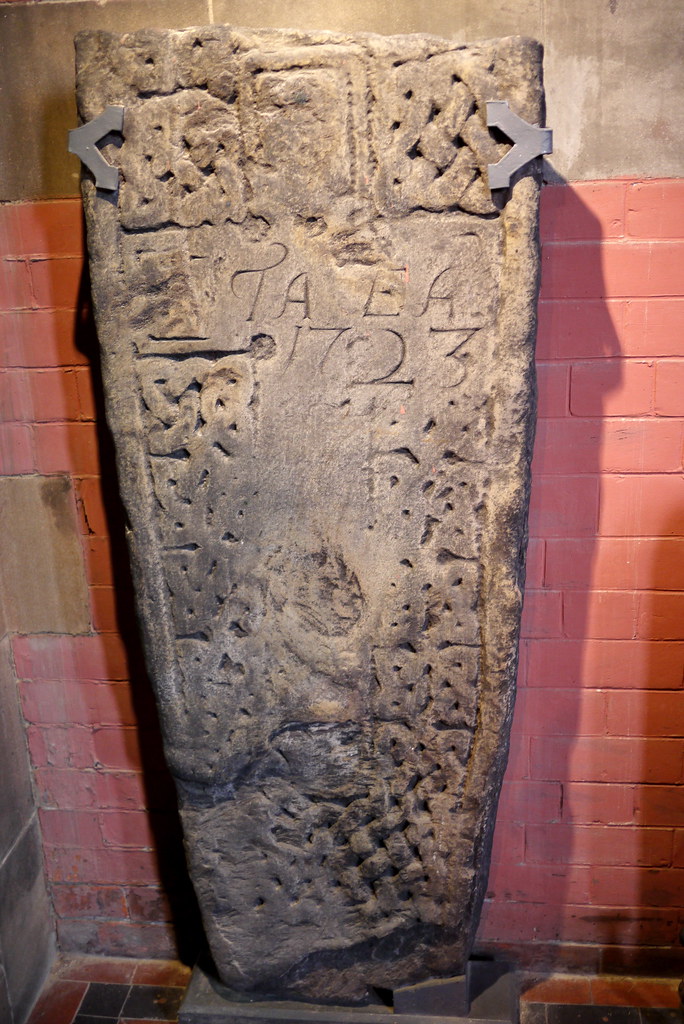

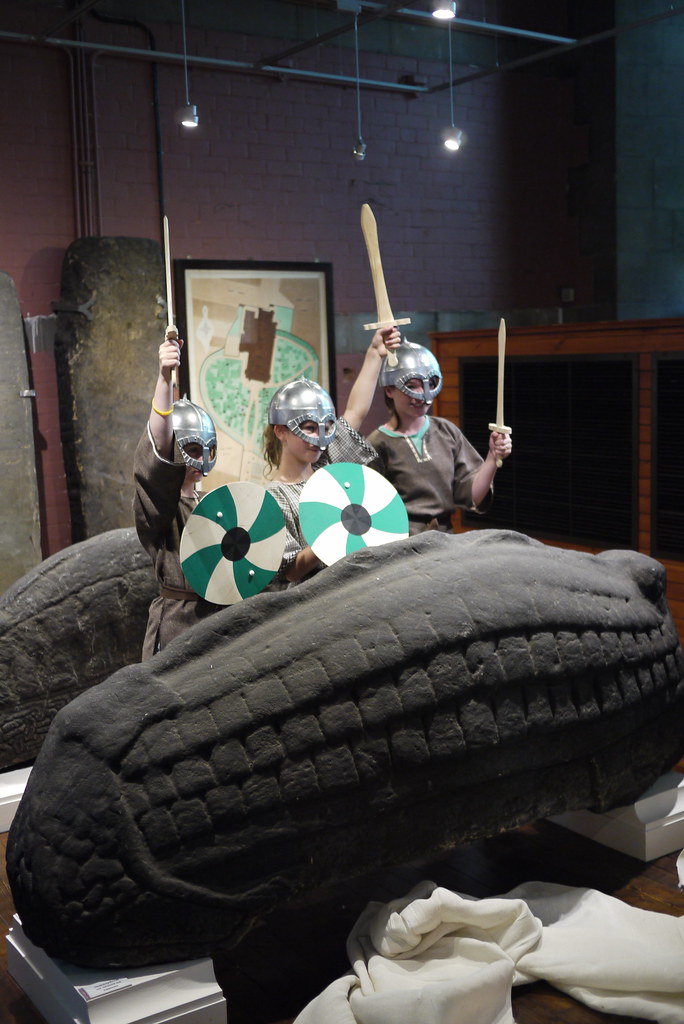
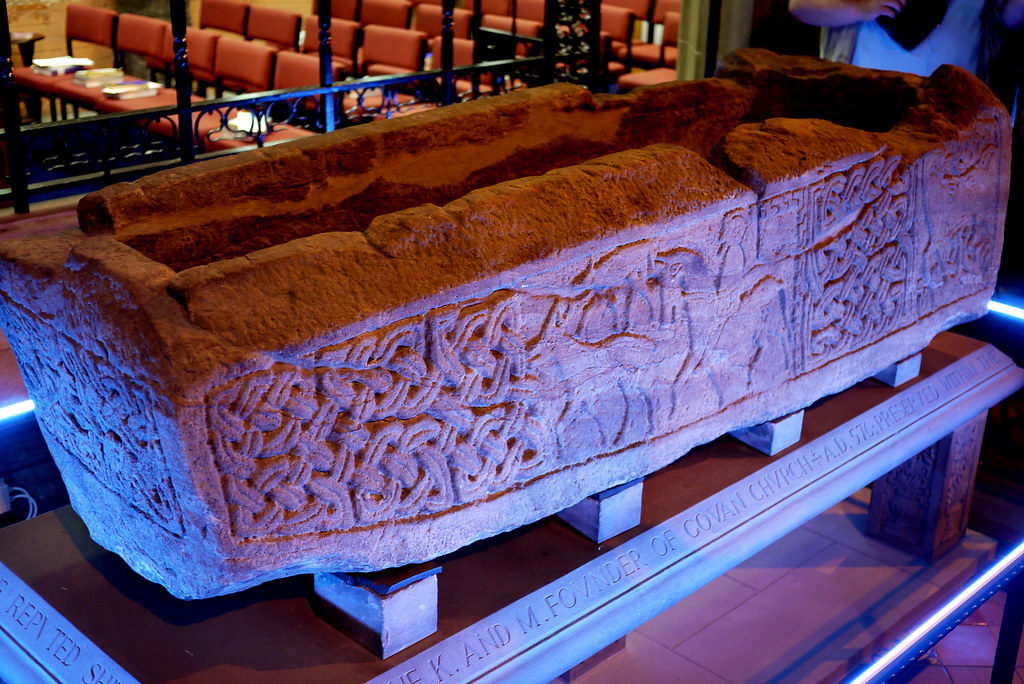
YARRRRRRR!
ReplyDeleteWhat a neat-o exhibition!
That looks so fun!
ReplyDelete